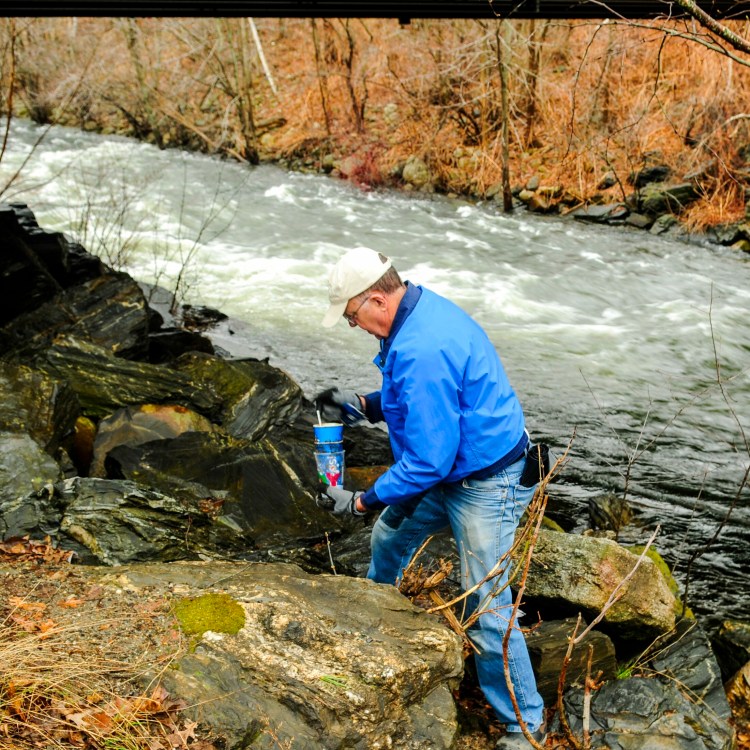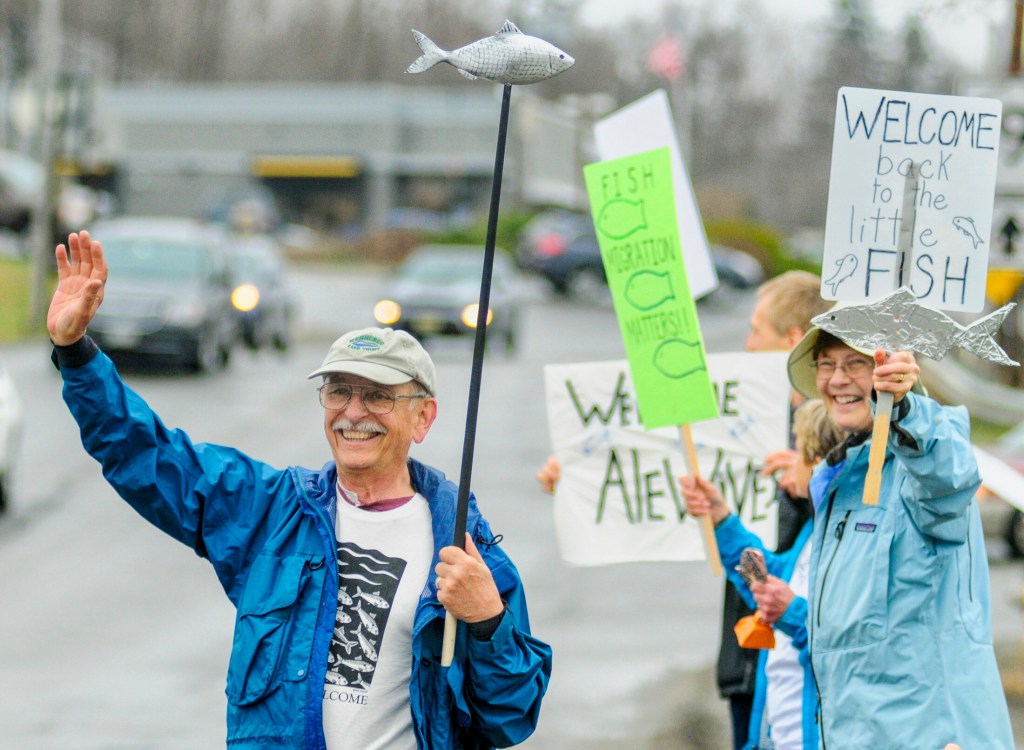GARDINER — An osprey perched on a branch above the mouth of the Cobbosseecontee Stream, watching for fish exiting the Kennebec River. Perching above the stream — not flying over it — is a sign that the alewife migration is near.
“People are busy in their lives and don’t realize what we have here,” said Tina Wood, who founded Upstream, a Gardiner nonprofit whose mission is to restore sea-run fish to the stream.
“There are a lot of species that depend on our stream,” she said.
For Earth Day on Saturday, Upstream organized a Cobbosseecontee Stream cleanup that drew 35 volunteers in the first hour. They met on the bridge on Bridge Street, and groups separated to clean up different sections of the stream.
“All the garbage from the winter melt ends up in our stream and river and out to the ocean,” Wood said. “We really want to pick it up.”
Emily Harrington, 18, a senior at Gardiner Area High School, felt compelled to participate in the cleanup after seeing so many photos circulate on social media of all the trash that ends up in the water.
“Animals are eating trash,” she said. “I saw a whale (on social media) that had so many tons of trash in its stomach.”
Slippery conditions on the steep, saturated banks and the high depth of the stream made it a challenge for volunteers to collect trash. Treading and picking carefully, volunteers still managed to collect 445 pounds of trash from the stream’s banks.
They picked up high numbers of plastic shopping bags, take-out food containers and plasticware, household items and cigarette butts. Some of the material could have been recycled, and bottles could have been redeemed.
As an organic farmer, litter cleanup is important to Dawn McKenna Frey.
“I hope that by being out here, people will see us and be more conscious about what they waste,” she said.
Upstream predicts alewives will return to the area in about a week. A member of the herring family, they will migrate to their spawning grounds — lakes and ponds further inland — but not via Cobbosseecontee Stream, which is dammed and prevents their travel beyond Gardiner.
Upstream volunteer Steve Brooke said that there is great potential on the stream to bring back the spawning population of alewives, which are a source of bait for lobstering.
“We have a great opportunity to build the populations of this fish for the help of the community ecologically and economically.”
He plans to lead a presentation at 6 p.m. Tuesday at Gardiner Public Library on the importance of the alewife population in the Cobbossee Stream and solutions for fish passage.
Three dams on the stream prevent migration into the Cobbossee Watershed. Before damming, the alewives migrated from the Atlantic Ocean to the native spawning grounds of Maranacook, Annabessacook and Cobbossee lakes in Winthrop and Monmouth.
“Ideally, I’d like to see a run of 3 to 5 million fish in Cobbossee Stream in 20 years,” Brooke said.
Copy the Story LinkSend questions/comments to the editors.





Success. Please wait for the page to reload. If the page does not reload within 5 seconds, please refresh the page.
Enter your email and password to access comments.
Hi, to comment on stories you must . This profile is in addition to your subscription and website login.
Already have a commenting profile? .
Invalid username/password.
Please check your email to confirm and complete your registration.
Only subscribers are eligible to post comments. Please subscribe or login first for digital access. Here’s why.
Use the form below to reset your password. When you've submitted your account email, we will send an email with a reset code.